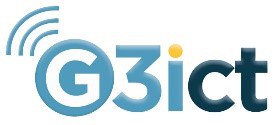The DARE Index: From Good Intents to Real World Feedback
Posted on December 10, 2018

President and CEO, G3ict
By now, twelve years after the adoption of the text of the Convention on the Rights of Persons with Disabilities (CRPD) by the United Nations General Assembly, and its subsequent ratification by 177 countries, the accessibility of Information and Communications Technologies (ICTs) has gained significant momentum around the world: about half (49%) of States Parties to the CRPD define it in their laws and regulations. As a result, policies and programs for making TV, web sites, mobile phones and services, e-books, electronic kiosks and everything digital accessible to persons with disabilities are on the agenda of many governments.
Actual progress in implementing those, however, is still very limited. Data collected by the G3ict Research team in collaboration with organizations of persons with disabilities and accessibility experts in 121 countries shows that while good intents are progressively translated into policies, laws and regulations, systemic issues limit their implementation. For instance, while 45 % of countries have TV accessibility policies or regulations in place, 25% have not started implementing them or remain at a minimum level of implementation. A similar picture appears for web accessibility: 45% of countries have web accessibility policies or regulations in place but 20% have no or minimum levels of implementation. Across the ten ICT accessibility sectors measured for outcomes by the DARE Index, only 18.9% of countries reach a partial or substantial level of implementation to date.
What are the systemic issues limiting implementation? How do individual countries perform compared to global benchmarks and peer countries results? Are there specific action steps that advocates and governments can take to accelerate progress? The DARE Index offers unique insights and answers based on real world data. It provides for each of the 121 countries surveyed a score for commitments (laws, policies and regulations identified by G3ict and the International Telecommunication Union as critical foundations for ICT accessibility in their model policy report), capacity and process to implement (identified by G3ict over seven years of research as critical success factors), and actual outcomes for each of the ten categories of ICTs identified by the Decennial Call for Action jointly issued by IDA, DPI and G3ict in the occasion of the celebration of the tenth anniversary of the CRPD at the United Nations.
How can advocates and governments best use the DARE Index?
1. Checking individual country profile and ranking provides a quick assessment of gaps and opportunities. This can be done by looking at comparisons with global levels of achievements for commitments, capacity or outcomes but also in comparison to peer countries by region or level of economic development. Such approach can help inform discussions among stakeholders at country level including when reporting progress to the Committee on the Rights of Persons with Disabilities.
2. Analyzing how high performing countries have achieved their results. It is most encouraging to see middle-income countries, such as Brazil or South Africa, score better than high income countries. It shows that when commitments and capacity are well aligned, progress in outcomes can be achieved irrespective of levels of economic development.
3. Identifying top performers in specific areas of interest to each country, such as promoting assistive technologies, promoting accessible workplaces or accessible ICTs in education, as sources of good practices. Examples in various sectors abound: Colombia for relay services for the Deaf, the United States for ICT accessibility in Public Procurement, Denmark or Ireland for TV accessibility or Brazil for accessible ICTs in Education.
4. Assessing progress accomplished over time. With each of the subsequent semi-annual DARE Index updates, countries will be able to assess their progress in specific areas and remaining gaps.
We strongly encourage all stakeholders interested in promoting ICT accessibility to dive into the results of the DARE Index to check the status of their countries and to provide feedback to our team. The more participation in providing real world data on what’s happening in each country, the better. The entire data set for the 121 participating countries in the DARE Index is publicly available with full individual country profiles on the G3ict web site. As we seek continued improvement of our advocacy tools, feedback for updates or adjustments about each individual country is most welcome through a link to our research team for semi-annual data updates of the Index.
It is humbling to see how much energy, work and expectations this research work has generated. Our sincere appreciation goes to our research colleagues, advocates and accessibility experts in 121 countries who are diligently helping build the DARE Index as a global common good for CRPD advocacy.





























